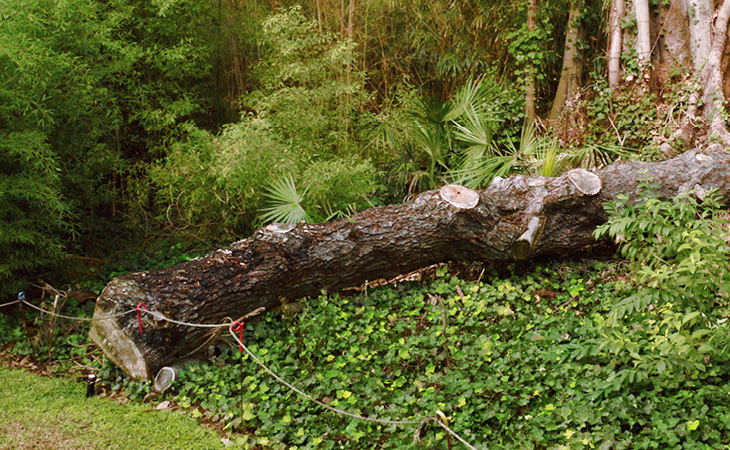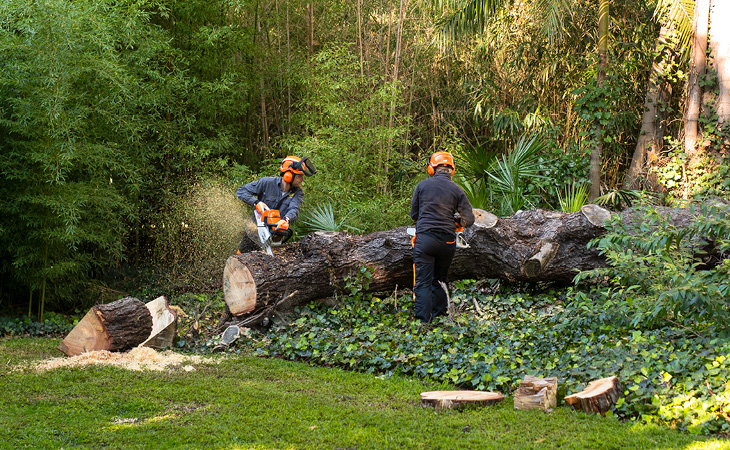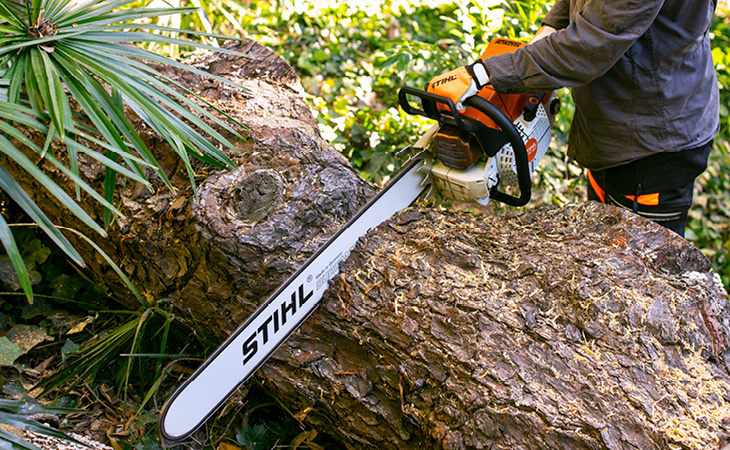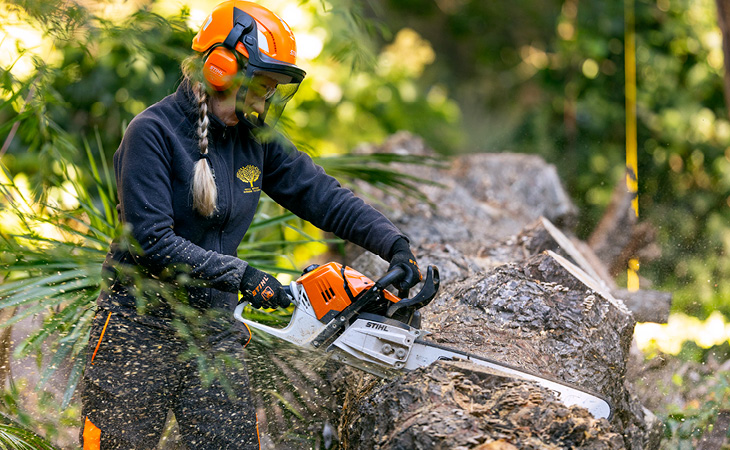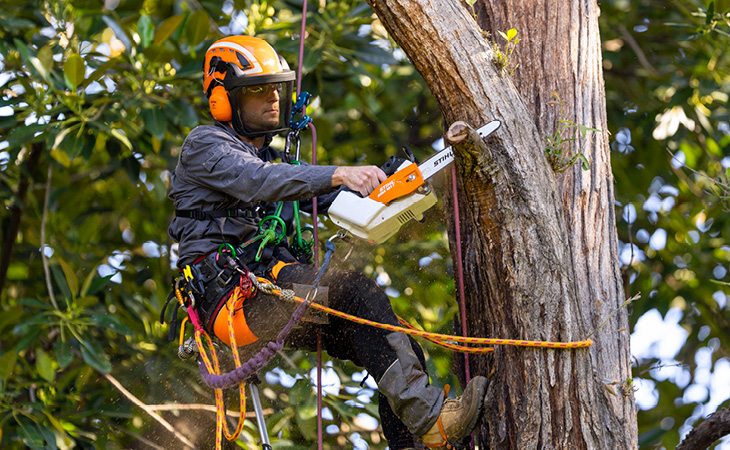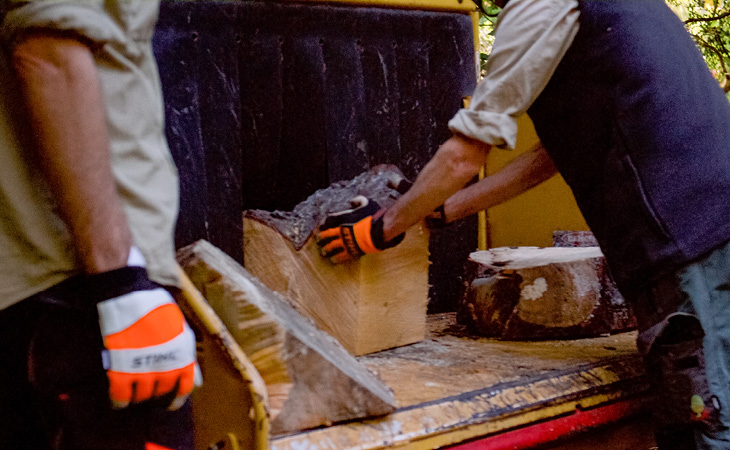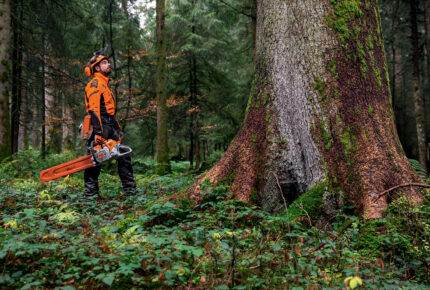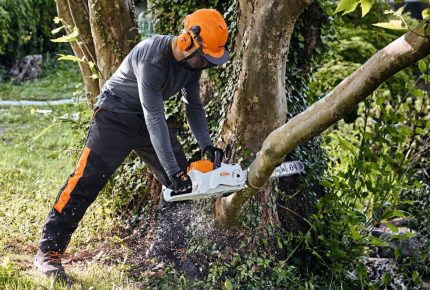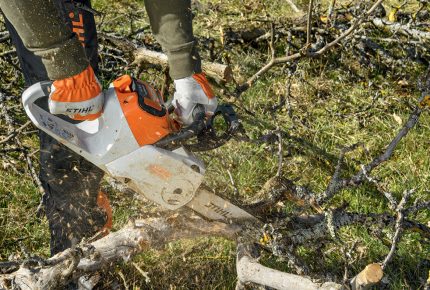
#How To
HOW TO CLEAR A FALLEN TREE
Recently the Royal Botanical Gardens Victoria arboriculture team were tasked with the clean-up of a 150-year-old radiata pine felled by severe storm winds at their Melbourne Gardens site.
A unique opportunity to gain insight into the processing of a fallen tree, our video here captures the breaking down of this tree in its dramatic and compelling entirety.
Read on to uncover more detail around both the process undertaken and the ground-breaking capabilities of the STIHL chainsaw range applied to make light of this most sizeable task.
THE TASK: A 150-YEAR-OLD RADIATA PINE
It was a sudden and forceful storm that descended on Melbourne that late October morning. Alerted that severe and damaging winds were forecast to hit the Royal Botanic Gardens Melbourne in a matter of hours, the Gardens were closed for visitor safety and RBGV Manager of Arboriculture Charlie Carroll and his team quickly responded, making their way in to check on those trees they knew could be vulnerable to such forces.
‘You could just see the wind building’ reflects Charlie. ‘It looked like a small tornado as we were coming in and, as I was about 100 metres from this 150-year-old large radiata pine, I heard a large bang and snap – it sounded a lot like a car crash. I could just see where the tree had fallen – it was quite a dense situation, with the tree taking out several trees on the way down. You could smell the pine from the fallen tree.’
The team went to work to evaluate the situation, a task complicated by the mess of different trees involved obscuring the extent of the damage. After clearing the first section of the affected area however, the team were able to see that the pine had fortunately fallen in such a way as to cause minimal damage to the larger neighbouring trees. Gathering their thoughts on how to best process the fallen tree, the team also noted that all that would be required to safeguard the neighbouring trees from the potential of disease was the relatively straightforward clearing of a few affected limbs.
1. ASSESSING THE TIMBER QUALITY
After ensuring the location had been safely stabilised, the teams’ first step was to assess the quality of the timber of the fallen tree. What the timber would be used for would be key to how it would be processed. Checking in firstly with industry professionals and the RBGV’s onsite education teams to see if they had any needs for the timber, and after an expert inspection by Charlie and his team, the decision was ratified to re-purpose the timber as mulch for recycling throughout the Gardens.
2. CLEARING THE TREE
The first step taken by the team in preparation of processing the fallen tree was to make the entire ‘fall site’ safe. Roping the area off to make it inaccessible to the public, a team of six worked a full day to clear the bulk of the material from the site, providing the access and space required to consider the fallen log.
With the end-product goal identified as mulch, Charlie and the team next planned how to break the tree down as quickly, efficiently and safely as possible.
Devising what cuts needed to be made where, and by which chainsaws, would be key to a safe and successful processing of the tree.
From the most powerful and high-performance chainsaws, to the mid-weights and the nimble climbers, the RBGV team then matched each task with the appropriate tools from the range of quality, high-performance STIHL chainsaws available to them in their kit.
3. RIPPING THE LOG
Using the most powerful chainsaws in their kit to breakdown larger sections of the tree, the team began by blocking and ripping the fallen log into manageable pieces.
Says Charlie: ‘To pull through the harder cuts where we are cutting against the grain, a process we call ‘ripping’, the MS 661 and the MS 881 were used for their low-end torque and their horsepower.’
THE STIHL MS 881
The MS 881 is the world’s most powerful series-produced chainsaw and is a tool many tree-professionals use when seeking a high-performance chainsaw for tree felling and processing larger trees. Delivering a mammoth 6.4kW in engine power courtesy of a STIHL’s ingenious 2-MIX engine, the MS 881 delivers maximum performance with maximum fuel efficiency.
THE STIHL MS 661 C-M
Because it’s not simply power alone that counts when harvesting large timber, but also every gram of weight, the STIHL MS 661 C-M is a chainsaw found in the kits of many tree-professionals.
Weighing in at just 7.4 kg with an impressive output of 5.4 kW, its 1.4kg/KW power to weight ratio is class leading.
Making work easier for even the most skilled professionals, this powerhouse features STIHL’s innovative M-Tronic electronic engine management to control the engine’s ignition timing and fuel supply, eliminating the need for manual adjustment of the carburettor while working, by always delivering the best possible engine performance.
4. BLOCKING UP THE LOG
When it comes to blocking, mid-weight chainsaws come into their own, as their blend of power and weight make them best suited to breaking the log down into smaller pieces.
To prevent the saw from being pinched or being trapped by the compression forces within the log, Charlie and his team employ the best-practice technique of making multiple small cuts or three-quarter cuts into the log, before finalising the cut from the opposite side.
As well as preventing jamming of the chainsaw within the timber, this technique also lessens the opportunity for blunting the saw chain as the cut is not taking the bar through to the ground surface, preventing dulling of the chain.
Tools and wedges are also applied to prevent jamming of the chainsaw, and to separate large sections when cutting.
Specifically engineered as class-leading mid-weight chainsaws, the STIHL MS 500i and the MS 400 C-M figure prominently in the range consistently used by tree, forestry and arboriculture professionals.
No stranger to either chainsaw, Charlie is quick to acknowledge the benefits of both. ‘The MS 500i is very diverse in terms of its range. Thanks to its torque it can be used for either large tree ripping or blocking’, he states.
The MS 400 C-M also ranks highly with the RBGV team, with Charlie noting that its outstanding versatility makes it a key tool within their kit.
THE STIHL MS 500i
The world’s first electronic fuel injected chainsaw, STIHL injection technology not only provides unprecedented torque, but also ensures rapid acceleration of the saw chain from 0 to 100 km/h in just 0.25 seconds.
With easy, reliable starting in all operating conditions and the best power to weight ratio in its class, the MS 500i is the Formula 1 of chainsaws.
THE STIHL MS 400 C-M
The world’s first chainsaw to use a magnesium piston, the game-changing MS 400 C-M has quickly established itself as one of the most versatile chainsaws a professional can add to their kit.
Facilitating a 14% increase in displacement with 14% less weight, the magnesium piston unlocks higher levels of performance across power, torque maximum speed and handling, while greater manoeuvrability and less operator fatigue are achieved due to the lighter weight.
5. CLEARING COLLATERAL DAMAGE
As part of the clearing process, the RBGV team identify the need to undertake several tree surgeries to safeguard neighbouring trees damaged by the pine as it fell.
Necessitating climbing, this aerial work includes removing affected limbs, cleaning up the natural fractures from where the breaks were and the clean removal of broken hanging limbs.
To assist them do the job quickly, effectively, and safely, the RBGV team reached for the lightweight, nimble, powerful and manoeuvrable MSA 161 T aerial battery chainsaw.
THE STIHL MSA 161 T
The MSA 161 T battery chainsaw has transformed chainsaw capability for climbing and aerial work.
Fitted with an extremely energy efficient, lightweight and compact STIHL electric motor, the MSA 161 T has been engineered for everyday use by professionals and combines exceptional power, cutting performance and quality with great user comfort.
6. A SUSTAINABLE RECYCLING LOOP
As part of a commitment to best-practice sustainability, the RBGV arboriculture team keep all tree and plant waste and debris generated within Royal Botanic Gardens Melbourne on site for recycling.
Once the tree has been blocked down to manageably sized pieces, it is fed into a chipper able to process material 35-40 centimetres in diameter.
The RBGV’s ‘closed community’ approach then enables use of this mulch throughout the site, particularly for use in garden beds created for new plantings as they come in.
With high-performance power and manoeuvrability delivered right across the STIHL professional range, and chainsaws specifically engineered to make light of the hardest tasks, the RGBV arboriculture team was able to clear the 150-year-old tree and safeguard all neighbouring trees from disease by trimming any affected branches and boughs all in a day’s work – albeit it a big day!

